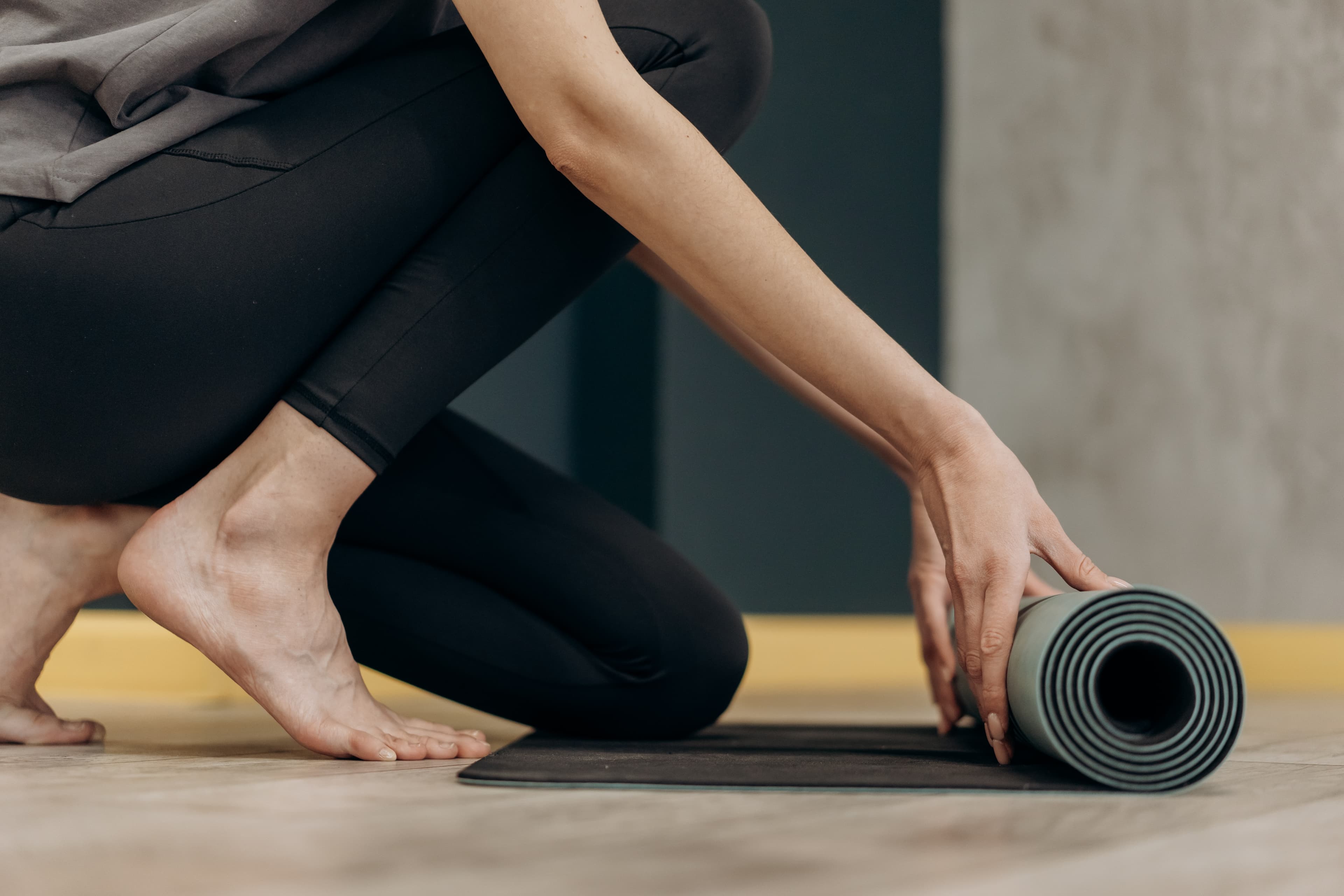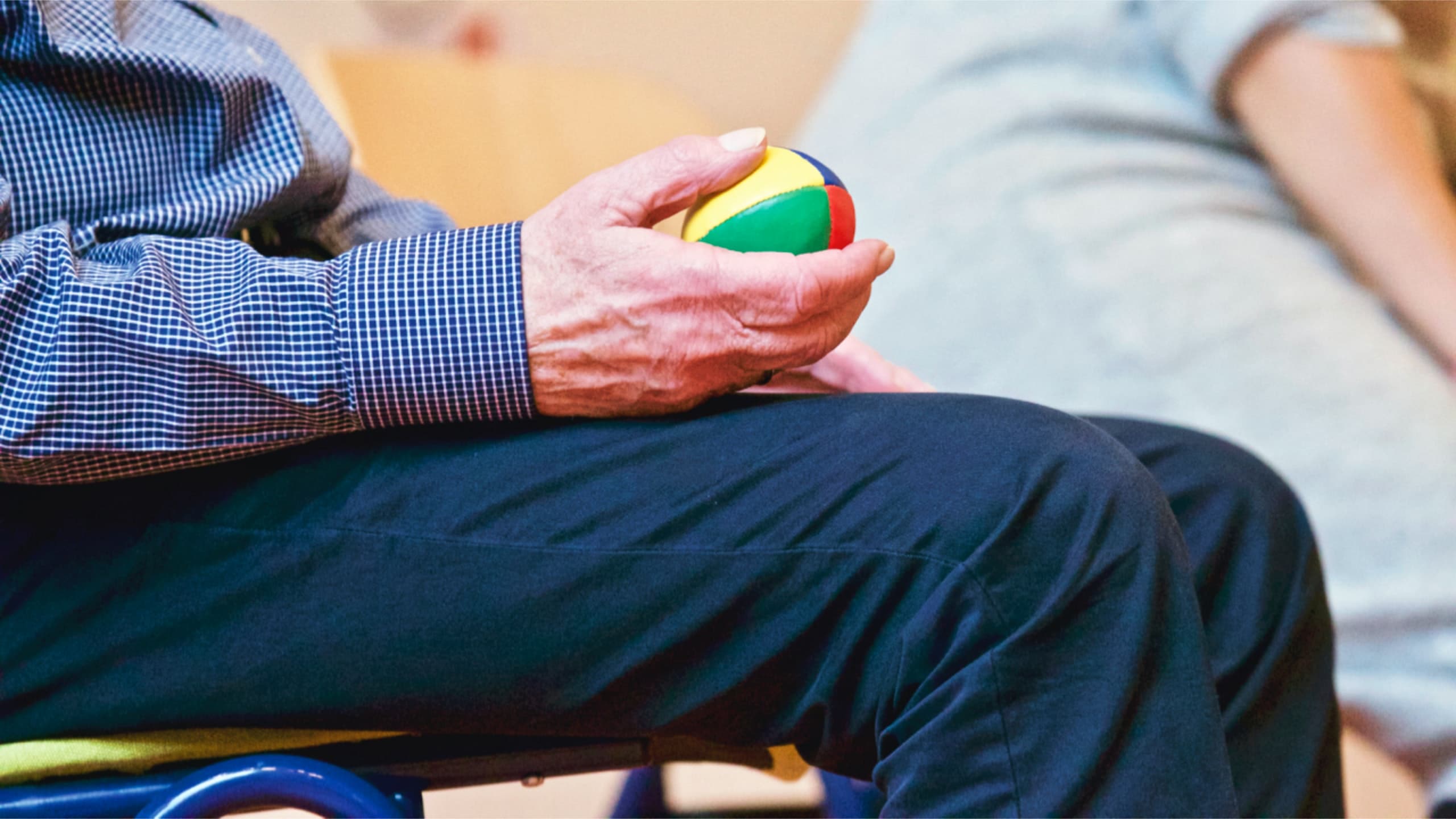If you’re recovering from surgery, an accident, or a major medical event (like a stroke, for example) it’s normal to want to rush into recovery. The thinking goes like this: the sooner you can get out of bed and start regaining your strength, the sooner you can return to your favorite activities.
While it’s important you take steps to encourage recovery, you can’t rush the process. To help you get the most out of your at-home physical therapy treatment regimen (and reduce your risk of injuries), we reached out to Mercedes Fernandez, a geriatric kinesiologist and holistic health and wellness coach. Below are her 6 top tips for preventing injuries in physical therapy.
1) Dedicate a specific area of your home to exercise
Before starting a new physical therapy treatment regimen, you need to make room to move around.
“When it comes to in-home PT, having a dedicated space for sessions is key,” Fernandez said. “The most important is to declutter an area. The session space should be clear and clean for the therapist to work around you. Hazards such as loose rugs, stairs, and uneven surfaces are sure to pose a risk for falls, trips, or slips.”
2) Consider your lighting and other equipment
You don’t need to build a gym inside your home to participate in physical therapy, but it’s a good idea to have certain items on hand. For example, Fernandez suggests making sure there’s enough lighting for both you and your physical therapist to see.
“Having a chair with no wheels is suggested and any non-moveable surface to hold onto, such as a table or countertop. Mirrors are a plus but not needed,” Fernandez added.
“Grab bars are helpful but don’t need to be installed if there is another sturdy surface already there. Your PT will assess your home on the first visit to find the right area to work in. They know best what will be needed and you can both get creative.”
3) Do your assigned stretches and exercises correctly
“The most common cause of injuries in physical therapy is not doing the movements correctly,” Fernandez said. “Your PT will guide you through an exercise and ensure that you are doing them correctly.”
“Please listen to their feedback and make the adjustments. It’s common to want to rush through the movements, but this only increases the risk of further injury. Your body is intelligent, yet fragile. When in doubt, ask your therapist if you’re doing it right. Go slow.”
For example, if you’re recovering from knee replacement surgery, you might be asked to practice knee extensions with a resistance band.
“The natural desire is to shoot your leg out as fast as you can and hyperextend your knee,” Fernandez said. “No, no, no! Rehab needs to go slow and stop at the right position. In this example, your physical therapist might direct you to stop with your knee slightly bent.”
Pro tip: Always listen to your body. If a particular stretch or movement doesn’t feel right, let your PT know. It’s better to stop and try something different than it is to “push through” discomfort and hurt yourself.
4) Go slow and never rush
Physical therapy isn’t about speeding through as many stretches and strengthening exercises as possible. Instead, it requires a slow and methodical approach.
“As mentioned before, the best way to prevent accidents and injuries during PT is to listen to the instructions of the exercise and take your time,” Fernandez said. “Anytime we try to cheat the movement or rush through it, there’s a higher chance of injury because we’re sloppy.”
5) Ask a friend or family member to participate
Many older adults who enroll in physical therapy rely on friends or family members to assist them with at-home activities, like getting dressed, preparing meals, or using the toilet. If you’re a caregiver, you can support your loved one’s recovery by taking an active role in the physical therapy treatment process.
“Family caregivers may shadow a session if they have communicated with the PT,” Fernandez said. “Most PTs even provide sheets of exercises to practice at home and discuss them with caregivers. Usually, I suggest caregivers shadow the first session. Afterward, they can use the weekly appointments for self-care.
Pro tip: Some people feel embarrassed and/or self-conscious about being watched. Therefore, it's important to talk with your care recipient before shadowing a PT session.
In addition, remember that you “can trust your care recipient is in good hands during physical therapy” Fernandez said.
6) Be patient and remember that progress takes time
Physical therapy isn’t a quick fix for chronic pain or mobility issues. It takes hard work, dedication, and an understanding that progress doesn’t happen overnight.
“Be mindful that your body changes with age and time,” Fernandez said. “What you were once able to do 20 years ago doesn’t apply to your modern-day abilities.
Give yourself grace and patience when learning new exercises and don’t be afraid to ask your physical therapist questions about techniques.
Your PT is there to help you heal and help your body feel as best as it can. When you’re consistent and committed to your healing, you will go far with great results! Remember that slow and steady wins the race.”



